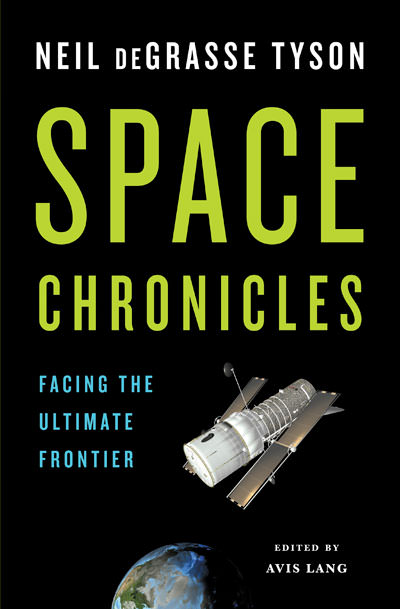For those fans of Carl Sagan’s Pale Blue Dot, there’s finally a successor volume to that.
Neil deGrasse Tyson’s Space Chronicles: Facing The Ultimate Frontier, at times, reads like an updated version of Sagan’s classic book about the history of astronomy and our place in the universe. Like Sagan, Tyson talks about the human perception of astronomy over the years, starting from our belief that everything centered around us and then gradually graduating to the more nuanced perception of the universe that we have today.
Find out how you can win a copy of this book here!
The book is an anthology of interviews, magazine articles and other writings of Tyson, who is currently the director of the Hayden Planetarium at the American Museum of Natural History in New York. His eloquence helps carry the reader through difficult concepts: “Engineering technology replaces muscle energy with machine energy”, he writes in part of the Industrial Revolution. In another part of the book, “Risks cancellations and failures are just part of the game” comes during an explanation of how some astronomical missions die before receiving funding from Congress.
Collecting his writings as an anthology, however, leads to some frustration for the reader who wants to read the book from the front to the back. Though Tyson awes with his knowledge of astronomy, popular culture and history, he sometimes uses the same anecdotes across different essays. There are at least three references concerning gas stations across the universe, for example, and he refers to the same John F. Kennedy speech (albeit different passages, for the most part) a few times as well.
The book is also aimed squarely at an American audience. The appendices are full of useful information on NASA, particularly its budget as it relates to government activities. Additionally, Space Chronicles opens with a new essay concerning NASA funding over the years and how it relates to American presidencies in a sort of echo of Spaceflight and the Myth of Presidential Leadership.
Tyson argues that space is non-partisan and that it takes more than a strong leader to move the program forward. Tyson criticizes NASA for de-emphasizing science in some of its past budgets. He refers to the controversy of Obama’s cancellation of George W. Bush’s 2004 vision for space exploration, and says one great weakness of NASA’s work is that it is continually handed mandates by new presidents with little follow-up on the grand ideas.
Through the book, Tyson talks about his ideas for NASA, mentioning initiatives such as asteroid tracking as high priorities. He also refers to the space committees he has been on and the people he has spoken to, and his efforts to bring space to children to encourage their participation in science, education, technology and mathematics.
Perhaps his most powerful essay comes at the end of the book. Tyson acknowledges the nature of his work sometimes makes him forget about Earthly problems: “When I pause and reflect on our expanding universe … sometimes I forget that uncounted people walk this Earth without food or shelter, and that children are disproportionately represented among them.”
That dilemma may never disappear, but Tyson’s book — at the least — provides powerful words for exploring the universe.


Greetings.
Fans of Russian Space Web may be interested in a new book by Antoly Zak from the former Soviet perspective right up to today’s Russian envisaged projects for the future:
http://www.russianspaceweb.com/book_future.html
And/or:
http://www.apogeeprime.com/prime/bookpages/9781926837253.html
The book is retailing pre-order for US $39.95 including packing.